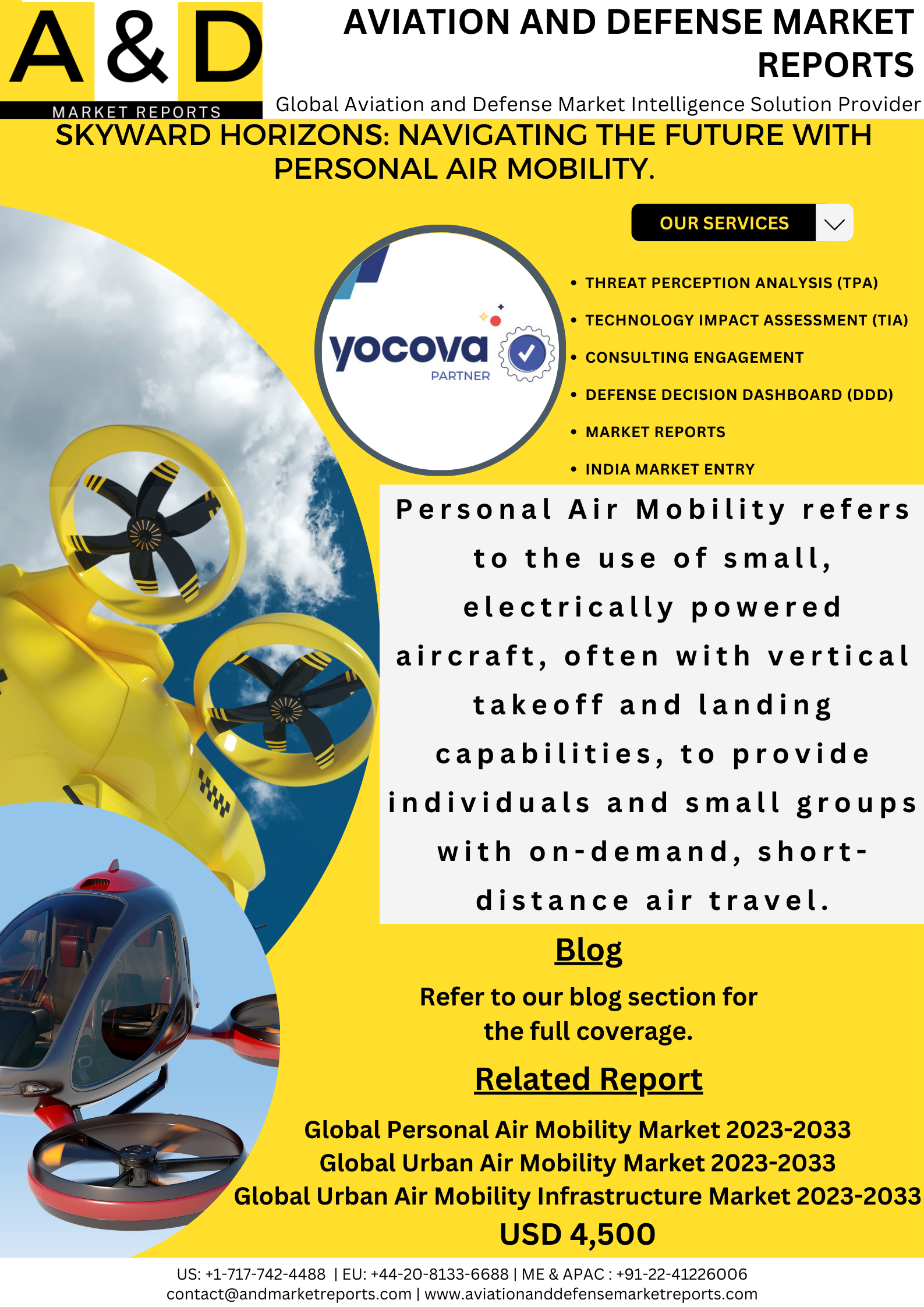PAM relies on small, electrically powered aircraft that can take off and land vertically. These vehicles are intended to operate in urban areas, taking off and landing vertically, like a helicopter. UAM is a broader concept that encompasses various urban air transportation services. PAM is a subset of UAM that focuses on personal and individual transportation needs. Many PAM concepts involve autonomous or semi-autonomous flight, in which the aircraft can operate independently of direct human piloting. This could improve safety while also making it easier to integrate into existing transportation systems. PAM services are frequently envisioned as on-demand, with users requesting flights via a mobile app or another platform, like how ridesharing services work.
Personal Air Mobility is intended for short-distance travel, offering a quick and efficient alternative to congested or time-consuming ground travel. PAM necessitates the development of appropriate infrastructure, such as vertiports or eVTOL landing pads in urban areas. PAM vehicles would use these facilities for takeoff and landing. Many PAM concepts include electric propulsion, which contributes to a lower environmental impact when compared to traditional aviation.
Electric vehicles are expected to emit fewer pollutants and produce less noise. PAM development and deployment face regulatory challenges in the areas of air traffic management, safety standards, and integration into existing airspace. Regulatory bodies are actively developing frameworks to address these issues.
ADVANTAGES
PAM offers the potential to reduce ground-level congestion in metropolitan areas. PAM vehicles can offer quicker point-to-point travel, cutting down on travel times and relieving traffic congestion on the roads by flying over traffic. PAM can provide commuters with faster and more direct routes, thereby saving time.
PAM vehicles can access locations that might be difficult to reach by conventional means thanks to their vertical takeoff and landing capabilities, which opens more effective travel routes. Compared to conventional combustion engines, many PAM concepts have lower emissions because they are electrically powered. Additionally, electric propulsion is typically quieter, which lessens noise pollution in urban settings.
PAM might make places with difficult terrain or little ground infrastructure more accessible. This is especially important in emergencies when PAM vehicles can swiftly travel to isolated or disaster-affected areas to offer aid. PAM systems frequently have autonomous or semi-autonomous design features. As a result, there might be less need for in-depth pilot training, increased safety, and easier integration with other autonomous systems.
PAM promotes the creation of futuristic and inventive aircraft designs that make use of cutting-edge technologies, electric propulsion, and sophisticated materials. This may result in more economical and environmentally friendly transportation options. PAM could facilitate faster and more convenient travel between regions that may be difficult to connect efficiently with traditional transportation modes by enhancing connectivity between urban and suburban areas.
CHALLENGES
Although Personal Air Mobility (PAM) has the potential to revolutionize urban transportation, several issues need to be resolved before it can be successfully implemented and widely used.
Creating and executing a PAM regulatory framework is a challenging undertaking. Aviation authorities face a great challenge in ensuring safety standards and integrating these new air transportation methods into the current airspace regulations.
Advanced air traffic management systems are needed to coordinate the movements of multiple small autonomous or semi-autonomous PAM vehicles in urban airspace. It is essential to maintain a safe distance from other aircraft, including conventional airplanes and helicopters.
It will take a lot of planning and money to build these facilities and integrate them into the current urban environments. Although PAM vehicles with electric propulsion can help reduce emissions, there is still concern about the noise these vehicles produce during takeoff and landing. Enforcing urban noise regulations and winning over the public requires addressing the issue of noise pollution.
It is difficult to persuade people to accept a new form of transportation, particularly one that involves autonomous or semi-autonomous flying. Acceptance depends on ensuring that communities are aware of the risks, advantages, and effects on their day-to-day lives.
A crucial component is creating safety guidelines and getting certified for PAM vehicles and operations. PAM vehicles must meet stringent safety and dependability requirements. It is critical to develop and test the necessary technologies, such as fail-safe systems, collision avoidance, and redundancy measures, to ensure the safety of passengers and the general public.
Many PAM concepts include electric propulsion, and the development of advanced battery technologies is critical for achieving sufficient range, payload capacity, and efficiency. Overcoming current battery technology limitations is an ongoing challenge.
The purchase price of PAM vehicles, infrastructure development, and operational costs must all be considered. Making PAM services accessible to a wide range of users is critical for market adoption. It is critical to coordinate PAM services with existing ground transportation modes such as buses, trains, and ridesharing services to create a seamless and efficient urban transportation system.
Recent Work: –
- SKYWARD HORIZONS: Navigating The Future With Personal Air Mobility
- ENHANCING DEFENSE CAPABILITIES: NAVIGATING THE FUTURE WITH AUGMENTED AND VIRTUAL REALITY
- DATA, DRONES, AND DECISIONS: THE TECH REVOLUTION IN C5ISR
- Commanding the Future: Exploring the Evolution of Battlefield Management Systems in Modern Warfare
- SHIELDING THE SKIES: NAVIGATING THE CHALLENGES AND TRIUMPHS OF MISSILE DEFENSE SYSTEMS
